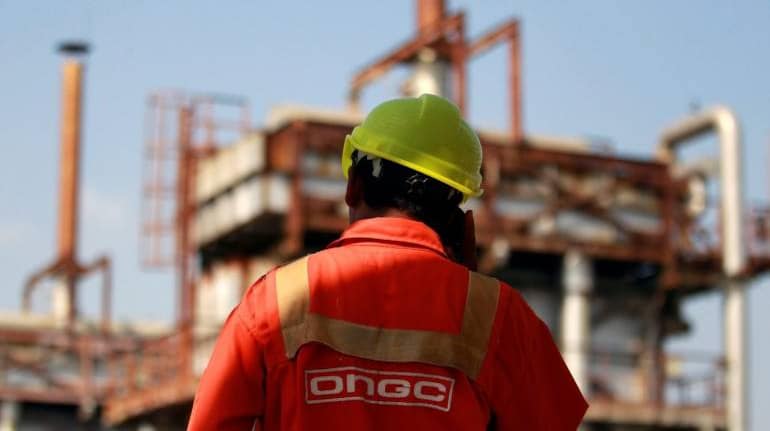



India’s largest crude oil and natural gas company, the state-run Oil and Natural Gas Corporation (ONGC) aims to arrest the decline in production of oil and gas and scale it up gradually to 63.11 million metric tonnes oil equivalent (MMTOE) from 58 MMTOE in FY21, company’s management told investors in a call on February 14.
ONGC, which contributes around 71 percent to India’s domestic production, has reported a gradual decline in output for over a decade now. The government has considered giving away ONGC's biggest oil and gas fields to private and foreign companies in an attempt to boost output but this has faced resistance from the officers' union of the company.“ONGC, along with the ministry of petroleum, has already drawn an action plan which includes a short term plan and goes upto 2024-25; under this plan we have set enhanced production targets. We have already submitted the plan and we are in the process of implementing this production action plan,” Anurag Sharma, director - onshore, said in an investors’ conference call. He also holds the additional charge of director of finance.Also read: ONGC Q3 Results | Profit jumps 220% on year to Rs 11,637 crore, revenue gains to Rs 1.46 lakh crore
The company expects that ONGC, along with subsidiaries and joint ventures, will scale up production to 60 MMTOE by FY24, and 63.11 MMTOE by FY25.“There will be a smooth progression in production starting with 2021-22,” Sharma said. On February 12, ONGC said that in the nine months ended December, its crude oil production declined 3.9% to 16.32 million metric tonnes (MMT). In the same period, its gas output declined 5.2% to 16.340 billion cubic meters (BCM). The company attributed the decline this year to restrictive conditions created by the Tauktae cyclone and Covid, delay in mobilization of Mobile Offshore Production Unit (MOPU) Sagar Samrat to Western Offshore-16 cluster project, modification work at Hazira and reservoir issues in S1 Vashistha fields in Eastern Offshore.Shares of ONGC touched a 52-week high of Rs 176.40 on BSE on February 14, driven by the result declared on February 12. The company’s consolidated profit after tax was Rs 11,637 crore for the third quarter of FY22, up 220 percent, as higher oil and gas prices offset the impact of a decline in production. Brokerage JM Financials said in a report that it reiterates its ‘buy’ rating on shares of ONGC, with a price target of Rs 230 a share. “ONGC is a key beneficiary of higher crude prices; every $1/barrel rise in crude price results in our valuation rising by around 2%. Further, ONGC is also a major beneficiary of the potential sharp jump in domestic gas price in FY23 given the spike in global gas prices,” the brokerage said in a report dated February 12. .Capex ONGC said that it will continue to invest around Rs 30,000 crore per year on capital expenditure aimed at arresting the decline in output and subsequently increasing it. “Our capital expenditure has been in the range of Rs 30,000 crore (per year), which we have been maintaining for about five years. The action plan that we are now implementing demands capital expenditure of at least the same amount if not more,” Sharma said.While he did not quantify the possible increase in capex, he said that the company will revise it if there are new opportunities, particularly from Open Acreage Licensing Policy (OALP) bids.Gas PricingThe company’s inability to pass on the burden of rising cost of gas has been weighing on ONGC. The management said that even after the revision of the APM (Administered Pricing Mechanism) formula based price to $2.9 per million British thermal units (mBtu) October 2021-March 2022 period from $1.79 per mBtu earlier, it was “barely enough” to meet production cost. The management said it has sought pricing and marketing freedom from the government.Mozambique Force MajeurONGC is unlikely to re-start work at its liquified natural gas (LNG) project in Mozambique unless all issues around the project are resolved. The $20 billion-project, where Indian firms own 30% stake with ONGC accounting for 16% interest, halted work indefinitely as violence in the area escalated. Commenting on the impact of the halt on Mozambique project on ONGC Videsh’s output, the latter's General Manager Nirmal Kumar said, “Our gas production will lag and our prediction continue to be for the next two years around 12.5 MMTOE, before it goes up further with Mozambique production.” ONGC’s overseas consortium ONGC Videsh consortium put the Mozambique project on hold in April 2021 due to force majeure amidst security concerns in the north of the Cabo Delgado province.“We cannot start operations to stop it again. We are hopeful that going forward in 2022, we would be in a position to resume operations. But the force majeure, as declared by the operator, will impact the production by a year,” Kumar said.Discover the latest Business News, Sensex, and Nifty updates. Obtain Personal Finance insights, tax queries, and expert opinions on Moneycontrol or download the Moneycontrol App to stay updated!
Find the best of Al News in one place, specially curated for you every weekend.
Stay on top of the latest tech trends and biggest startup news.